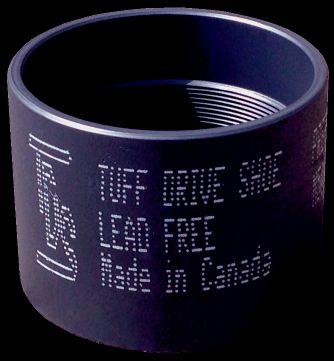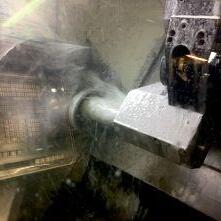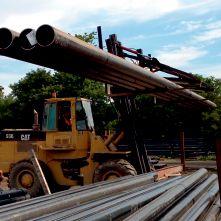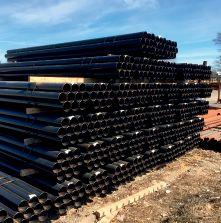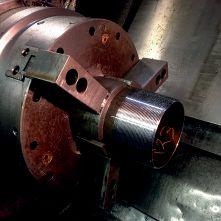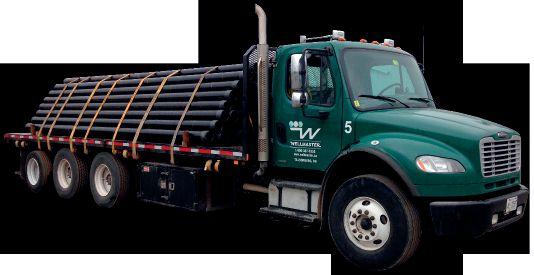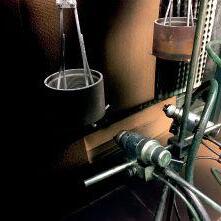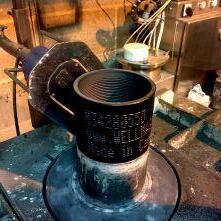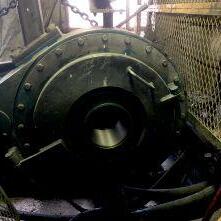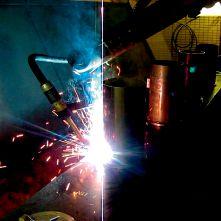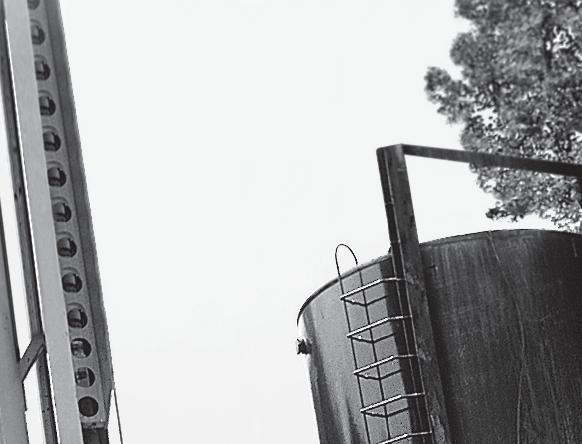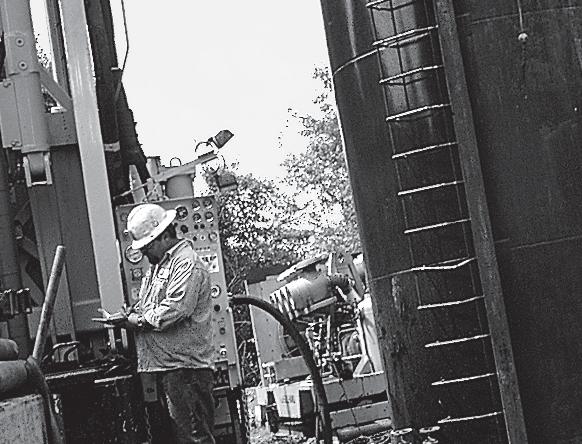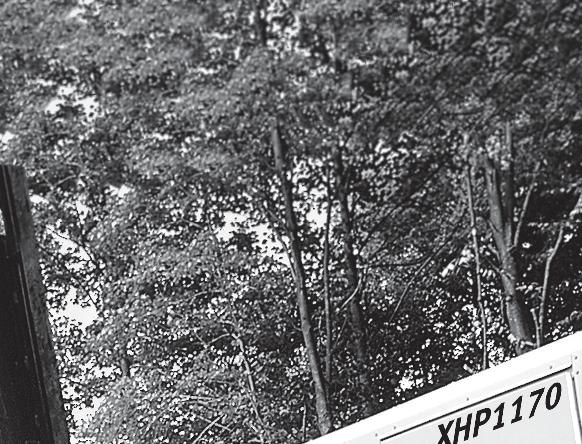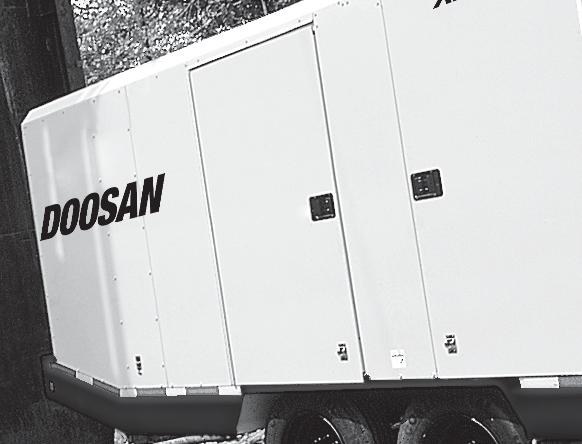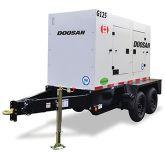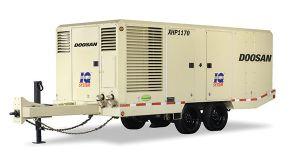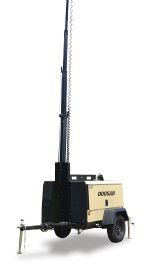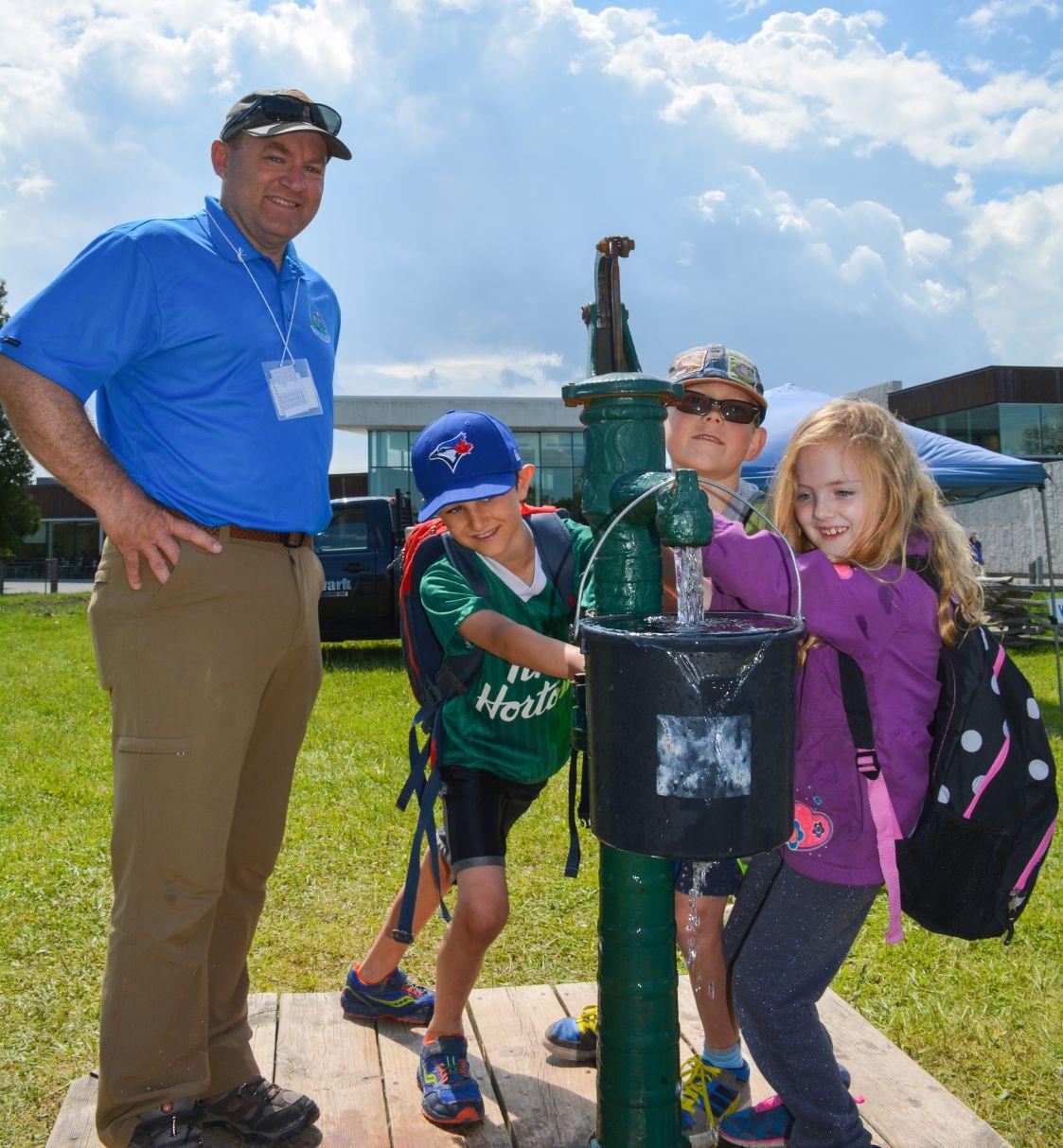




It’s easier than you think. Franklin Electric’s complete solar product line, including the SubDrive solar controller and new modular Fhoton™ drive, provides you with everything you need – panels, pump, motor, and drive from the people who know groundwater best. And, we back it up with Field Service Engineers willing to help you every step of the way. Ask for Franklin solar products and create your new revenue stream today.



Annex Publishing & Printing Inc. P.O. Box 530, Simcoe, Ontario N3Y 4N5 (800) 265-2827 or (519) 429-3966 Fax: (519) 429-3094
Managing Editor | Laura Aiken laiken@annexweb.com (416) 522-1595
Editor | Colleen Cross ccross@annexweb.com (519) 428-3471
Sales Manager | Ed Cosman ecosman@annexweb.com (519) 429-5199, (888) 599-2228, ext 276
Account Coordinator | Barb Comer bcomer@annexweb.com (519) 429-5176, (888) 599-2228,

Media Designer | Curtis Martin cmartin@annexweb.com
Group Publisher | Martin McAnulty mmcanulty@annexweb.com
Director of Soul/COO | Sue Fredericks
Publication Mail Agreement #40065710. RETURN UNDELIVERABLE CANADIAN ADDRESS TO CIRCULATION DEPARTMENT, P.O. BOX 530, SIMCOE, ON N3Y 4N5
e-mail: subscribe@groundwatercanada.
Printed in Canada, All rights reserved. Editorial material is copyrighted. Permission to reprint may be granted on request. 0383-7920
Circulation
e-mail: subscribe@groundwatercanada.
Tel: 416-442-5600 ext. 3543 Fax: 877-624-1940
Mail: P.O. Box 530, Simcoe, ON N3Y 4N5
Subscription Rates
Canada - 1 Year $42.00 (plus 5% GST - $44.10)
U.S.A. - 1 Year $60.00
Occasionally, Ground Water Canada will mail information on behalf of industry-related groups whose products and services we believe may be of interest to you. If you prefer not to receive this information, please contact our circulation department in any of the four ways listed above.
Serving the Canadian Ground Water industry for 43 years.
www.groundwatercanada.com Summer 2017 Vol. 43, No. 3
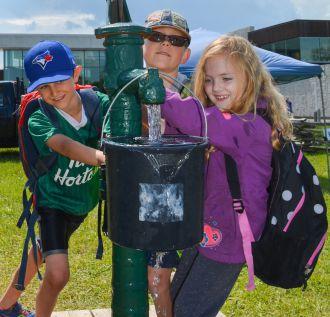
Addressing the First Nations water crisis, one community at a time
Want to launch a children’s ground water festival? Here’s how
OGWA members came together to learn, network and collaborate
B.C. town’s approach to naturalasset management is catching on
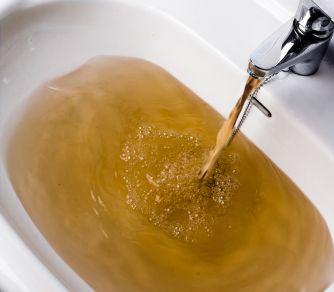
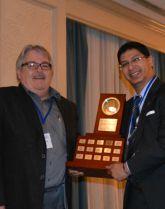
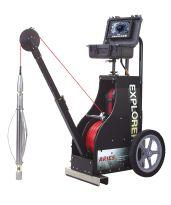
Winnipeg to install monitoring wells over old landfills
Winnipeg plans to conduct more environmental testing on its old landfills through new monitoring wells to get a better handle on potential contamination.
Residents updated on TCE contamination in Ontario city
Residents living in Cambridge, Ont., were updated at a meeting in May about a portion of the city’s Preston area contaminated by trichloroethylene.

by Colleen Cross
Canada’s Federal-Provincial-Territorial Committee on Drinking Water recently released a report on lead in drinking water with an eye to updating the Guidelines for Canadian Drinking Water Quality. Comments were taken from the public until March 15.
The report, entitled “Lead in Drinking Water,” proposes lowering the maximum acceptable concentration (MAC) for total lead in drinking water to 0.005 mg/L (5 µg/L) from the current guideline of 0.010 mg/L (10 µg/L) “based on a sample of water taken at the tap and using the appropriate protocol for the type of building being sampled. Every effort should be made to maintain lead levels in drinking water as low as reasonably achievable (or ALARA).”
The report provides updated data and information related to exposure to lead in Canada, to analytical methods and to treatment approaches available at the municipal and residential scales, the government said in a news release.
What is the current status of the proposed guideline? The Water and Air Quality Bureau, which is part of Health Canada, told Ground Water Canada in an email that the guideline document still needs to be revised to take comments into consideration, approved through two federal-provincial-territorial committees and then published.
After that, the bureau said, it will be up to provinces and territories to decide whether or not to adopt the guideline, incorporate it into regulations, enforce it and set a timeline for doing so.
It’s reassuring to see the federal government take action to limit lead in our drinking water supply. The current summary table lists the reasons behind the MAC as effects on the intellectual development and behaviour of infants and children under six years, along with anemia, central nervous system issues and ill effects in pregnant women on their unborn babies.
These and other damaging effects came to the forefront in Flint, Mich., in January 2016, when, due to insufficient water treatment, more than 100,000 residents were potentially exposed to high levels of lead in their drinking water. A federal state
of emergency was declared in January 2016 and Flint residents were instructed to use only bottled or filtered water for drinking, cooking, cleaning, and bathing. A year-and-a-half and a nearly $100-million EPA settlement later, water quality has returned to acceptable levels but residents are still using filtered and bottled water and likely will be until 2020.
Nevertheless, a new Canadian guideline will likely mean changes for the water well drilling and related industries.
According to the “Lead in Drinking Water” report, there may be an economic effect on the testing side. For private wells, it says – and this is based on historical water quality data – a changed MAC will result in an exceedance of the limit that could raise the costs associated with analytical testing and treatment.
Interestingly, the committee report says that although most often found through testing at the tap, lead has also occasionally been found in drinking water as a result of the weathering of certain rock formations into the ground water. In 2006, a public health advisory was issued to rural City of Hamilton residents located above the Niagara Escarpment whose drinking water supply was obtained from a drilled well. Residents were advised that there was a potential for high lead levels in some wells due to naturally occurring lead in the bedrock.
Well regulations and infrastructure policy also may change. Finally, we’ll need to pay attention to the new analytical and treatment protocols outlined in the report.
While we applaud the tighter guideline, it’s important the industry stay informed and ready for its ripple effects.


In 2015, half of Canadian households treated their drinking water, according to a new Statistics Canada report that shines light on the factors behind water treatment decisions.
The most frequent reason for treatment was to improve the taste, odour or appearance of the water as found in 45 per cent of households, according to a Statistics Canada news release. The most common water treatment technique was the use of jug filters, which 25 per cent of Canadian households reported using.
Households in Newfoundland and Labrador were most likely to treat their drinking water before using it, while Quebec households were least likely to do so. Among census metropolitan areas, households in Winnipeg, Barrie and
Calgary were most likely to treat their water. Conversely, treatment was less common in Windsor, Ont., Quebec City and Sherbrooke, Que.
In general, households that owned their home were more likely to treat their water than those that did not. Similarly, 56 per cent of households with children treated their water compared to 48 per cent of those without children.
Households with a total annual income of more than $100,000 treated their water in 58 per cent of the cases compared with 43 per cent of households with an income under $60,000.
Finally, households living in a dwelling built before 1995 were less likely to treat their water (47 per cent) than those with newer houses (62 per cent).
Of the 10 per cent of households under a boil water advisory in 2015, 60 per cent treated their water by boiling it, 65 per cent used bottled water and 12 per cent filtered their water.
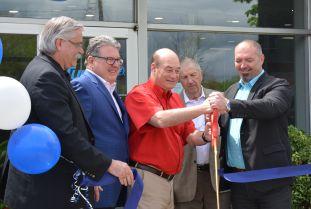
Tulsar Canada, an engineer and manufacturer of water and wastewater pump control panels, is eyeing aggressive and ambitious expansion in its new facilities in Brant County.
Recently settled into a 135,000-squarefoot facility just east of Brantford, Ont., Tulsar Canada is hoping to quadruple both its production and its workforce, adding up to 150 new jobs to the area. There are currently 50 people working in engineering, customer service, marketing, administration, manufacturing and quality control at Tulsar, the company said in a news release.
Tulsar Canada, a division of the Louisville, Ky.-based Zoeller Corporation, is an engineer and manufacturer of water and wastewater pump control panels that are custom designed and built in Canada to the specifications of its clients.
Micevski was joined at the ribbon cutting by Zoeller Corporation chief executive John Zoeller, Brant MPP and Speaker of the House Dave Levac, Brant MP Phil McColeman and Brant County Mayor Ron Eddy.
“We are very optimistic coming to this community and opportunities we have,” said Zoeller. “We have some big growth plans for this operation. We appreciate all of the work our employees have done to get us to where we are here today.”
Founded more than 36 years ago in Kitchener, Ont., Tulsar’s products range from the Sentry – a Wi-Fi-enabled residential high water alarm – to engineered custom water and wastewater control panels for industrial, commercial, recreational and municipal clients.
Zoeller Canada, the distribution arm of Zoeller Corporation, will also be housed under the same roof in Brant. Zoeller Canada supports its pump customers with engineered water solutions for the same customers and industries.
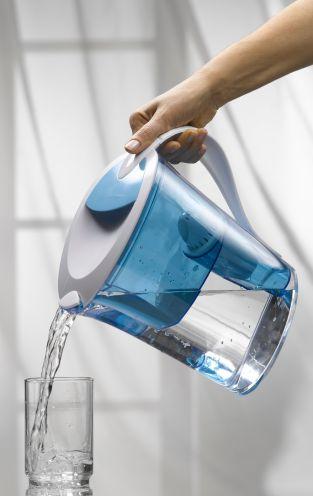
The most common water treatment technique was the use of jug filters, which were reported by 25 per cent of Canadian households.
$5.5M
The federal government has made $5.5 million in funding available for environmental projects under the Environmental Damages Fund in eight provinces and territories across Canada.
The fund follows the polluterpays principle, ensuring that monies collected from environmental penalties are used for projects with positive environmental impacts, in the manner intended by the court, the government said in a news release. This funding will support projects that help to restore or enhance the environment, conduct environmental research, and provide public education on environmental issues.
Funding for projects is available in Alberta, B.C., Manitoba, Newfoundland and Labrador, Northwest Territories, Ontario, Quebec, and Saskatchewan.
Eligible applicants include non-governmental organizations; universities; indigenous organizations; and all levels of government.


See and experience constant pressure control through the power of wireless remote communication
• Immediate notifications to both you and your customer.
• Review drive settings remotely so you can plan ahead.
• Dedicated Tech Support team to help you diagnose issues quickly.


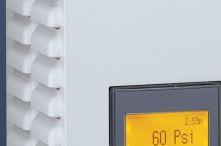







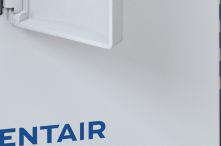




Be Aware. Be Notified. Be Prepared. Be In Control.
490 Pinebush Road, Unit 4
490 Pinebush Road, Unit 4








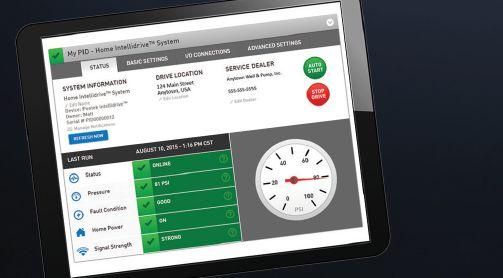








Franklin Electric recently marked the official grand opening of its new Canadian operations centre in Bolton, Ont., with an open house and tour.
The new facility brings together all of Franklin Electric’s growing Canadian operations – including its distribution, customer relations and training efforts. It also demonstrates Franklin Electric’s long-term commitment to, and investment in, Ontario and Canada, the company said in a news release.
The company, a leading producer and marketer of systems and components for the movement of water and automotive fuels, announced in April it will acquire controlling interests in three U.S. distributors: 2M Company of Billings, Mont., Western Hydro Holding Corporation of Hayward, Calif., and Drillers Service of Hickory, N.C.
The acquisition cost is approximately $89 million in the aggregate, which includes assumed debt, Franklin Electric said in a news release.
“The specialized ground water distribution channel in the U.S. through which we sell our products is an important element in the ultimate sale, support and specification to the installing contractors,” said Gregg Sengstack, Franklin Electric’s chairman and chief executive officer, in the release. “Working in partnership with our distributors, Franklin Electric has developed a broad array of products and systems solutions that will only grow as regulatory and efficiency demands increase in North America.”
Franklin Electric will operate the acquired distributors in an entity named Headwater Companies, LLC. The company has named DeLancey W. Davis, a 25-year industry veteran including the last eleven as an executive officer of Franklin Electric, as president of Headwater Companies. Davis will have overall leadership responsibility for the new segment and will begin to immediately integrate the three acquisitions into a single operating unit.
TECTA-PDS, a Canadian-owned drinking water technology company, has opened its new business headquarters in Kingston, Ont.
The company makes an automated, EPA-approved microbiological water quality water system for onsite water testing for E. coli bacteria.
Its fibre-optic sensory technology was first developed at Queen’s University to address concerns arising from the Walkerton water tragedy of May 2000, when seven people died and many thousands became ill because of an E. coli outbreak in the community’s water supply, TECTA-PDS said in a news release.
Formerly known as Pathogen Detection Systems, the company was purchased by the European multinational Veolia Environment in 2009 and renamed Endetec. That purchase enabled the company to ready its water-testing products for the market.
The company recently adopted the name TECTA-PDS. Its head office, engineering facility and manufacturing facility are now located in Kingston and its entire supply chain is now exclusively based in Canada and the United States.
“We’re proud of the fact that our technology is now being used in more than 25 countries and that we’re expanding rapidly internationally,” said Tim Adams, executive vice-president, in a news release. “Our units have now become the go-to method for testing for E. coli in every region around the world.”
Heron Instruments of Dundas, Ont., recently welcomed David Mackie to its research and product development team.
Mackie joined the manufacturer of ground water monitoring equipment and products in 2015 for a oneyear internship before returning to Carleton University to complete his degree in industrial design. His newfound interest in the water sector inspired him to focus his major thesis project on providing clean water for underdeveloped rural communities, the company said in a news release.
Mackie graduated this spring and joins the company full time.
“His education brings not only an expertise in materials and manufacturing but also a background in ergonomics, user interaction, colour theory and product psychology,” the release said.

Heron Instruments’ newest team member, David Mackie, focused his major thesis project on providing clean water for underdeveloped rural communities.
Mackie said he is excited to bring advanced, innovative ideas to Heron Instruments’ newest developments, while maintaining or improving the robust and reliable products the company already manufactures.

































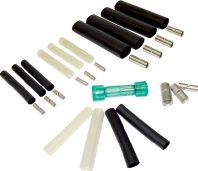
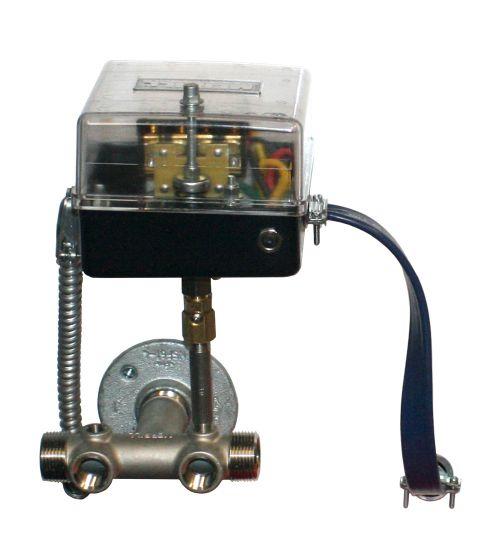


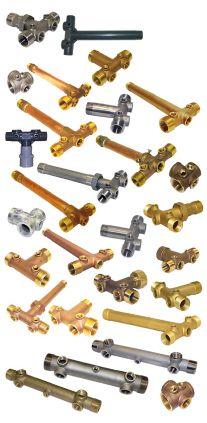






















It’s easy to get overwhelmed by the enormity of the First Nations water crisis. It’s also easy to shift responsibility and point fingers of blame.
Placing blame may temporarily relieve some of the shame that such conditions exist in First-World Canada but it also delays desperately needed action.
In graphic detail, the June 2016 Human Rights Watch report, “Make it Safe: Canada’s Obligation to End the First Nations Water Crisis,” gave the world a good, hard look at what many First Nations communities face daily. As of January 2016, of the 134 DWAs (drinking water advisories) across Canada, 85 of them were in First Nations communities.
Blame is placed squarely on the government and “the lack of binding regulations on water quality on First Nations reserves; persistent underfunding and arbitrary budgeting for water system costs, including capital, operation, and maintenance costs; lack of support for household water and wastewater systems; worsening conditions of source water; and lack of capacity and support for water operators.”
According to the report, “the Canadian government has violated a range of international human rights obligations toward First Nations persons and communities by failing to remedy the severe water crisis.”
As true as that charge may be, topdown remedies are proving less than
by CAROLYN CAMILLERI
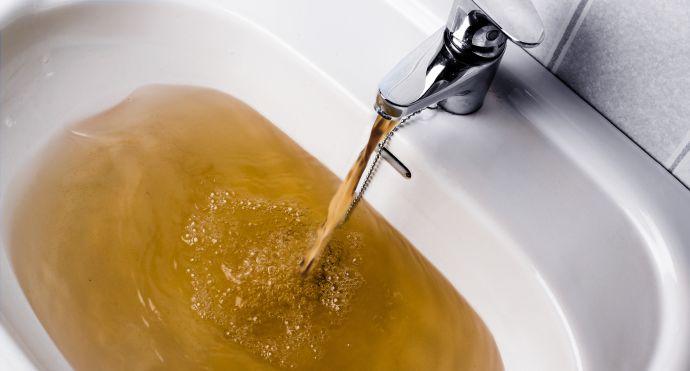
The June 2016 Human Rights Watch report, “Make it Safe: Canada’s Obligation to End the First Nations Water Crisis,” said that as of January 2016, of the 134 drinking water advisories across Canada, 85 of them were in First Nations.
ideal. In March 2016, the federal government increased the amount allocated over the next five years for infrastructure in indigenous communities from $1.8 billion to $4.6 billion. A year later, the David Suzuki Foundation and the Council of Canadians teamed up to check on progress. Their report, “Glass Half Empty? One Year Progress Toward Resolving Drinking Water Advisories in Nine First Nations in Ontario,” states, “Almost one year after the budget announcement, the process for attaining clean and safe drinking water for First Nations remains flawed.
Changes must be made to this complex process for the federal government to maintain progress toward its goal of ending long-term DWAs. Funding alone will not resolve the issue.”
The 2016 funding announcement is not the first time the federal government has spent broadly on First Nations water issues. If lessons are to be learned from the past, it is also critical to consider where funds are being spent.
Craig Stainton, executive director of the Ontario Ground Water Association, says it comes down to a “lack of common sense and a heavy




dash of greed.” The lack of common sense relates to installing water systems in communities without adequately training water operators, without adhering to regulations and without the approval of the community. And that is where the greed comes in: companies that have built infrastructure paid for by federal dollars and then abandoned the facilities, which then deteriorate.
“You can’t tell me they don’t know about all these problems with the residents not wanting to use the water, the treatment plants breaking down and the like,” Stainton says. “It is disgusting, and it just keeps going on and on. Suck polluted surface water out of lakes and streams, pound it with chemicals in a treatment facility the band has no hope of running, deliver it through a costly distribution system, wait for the inevitable imploding of the system no one can fix and start the problem all over again by involving Indigenous and Northern Affairs [INAC] or the federal government in the solution.”
The Human Rights Watch report supports this view: “Of the dozens of drinking water advisories in effect on systems in Ontario First Nations, at least 57 of them are for systems less than 25 years old and 12 are for systems less than 15 years old. In at least two cases, the advisory was put in place within a few years of construction.”
So how can we do this better? Inez Miller, executive director for the Manitoba Water Well Association, knows throwing money at the problem doesn’t work. She has visited 98 per cent of the First Nations communities in her province, and she has witnessed at first hand the barriers communities face with respect to water wells: drilling through rock, remoteness and road access challenges. In some cases, there are only ice roads.
“For water testing, to determine whether the there’s any contamination, those tests must be analyzed within 48 hours,” Miller says. “What do you do when there isn’t any way of getting
those tests done? You can’t get tests out in 48 hours.”
She also points out that water sources – well, cistern or surface water – and how they are maintained vary, as do the problems they are likely to encounter.
“A lot of cases in the more southern or middle part of the province, there are cisterns in the homes, but nobody’s told the people how to take care of the cistern.”
In other cases, a contaminated pump
“There is a whole raft of problems, and it’s hard to pinpoint any one. Every community will be just a little bit different.” –Inez Miller, Manitoba Water Well Association
may have been installed. “There is a whole raft of problems, and it’s hard to pinpoint any one,” Miller says. “Every community will be just a little bit different.”
For Miller, the medical connection is important. It’s not just a case of meeting the right to clean water: it’s a health risk and a medical services issue. “In those remote areas, just think, they don’t have a hospital to access, maybe just a nursing station, if they do have some kind of outbreak because of contaminated water,” she says.
That there will never be a onesize-fits-all solution for every First Nations community is evident, which is why Miller believes the hope for resolution starts with education at the community level. It has to start with the people.
“We can design and develop any kind of program we want, but if it doesn’t work for the people and it’s not a program identified with by the
people, in fact, it’s probably not worth the paper it’s written on,” she says.
It is impossible to ignore the water crisis when your people live with it every day.
“In B.C., we do have bands that live in Third-World conditions,” says Jamie Tomma, public works supervisor and head water operator for the Little Shuswap Lake Indian Band. “Myself and my band membership and other band memberships, take [water] for granted. We turn the tap on, and clean, safe water comes out of the tap. And yet there are bands of people that don’t experience that. They don’t have the luxury to do that.”
In Ontario, conditions are especially appalling in the north. “Our northern communities, they have it so much harder than anybody else,” says Bill Hutchison, public works manager for Keewaytinook Okimakanak in Dryden. Hutchison explains that while all the communities are in the same boat on many issues, in the north, problems are intensified. “And without basic needs, like water, no one can succeed.”
A big part of the task ahead is cleaning up the mess left behind.
“The government put in these stateof-the-art water treatment plants and sewer treatment plants in a lot of communities. But the people who are running them were not properly trained, and the plants deteriorated,” Hutchison says. “It took us a long time to get the facilities back in the shape they belong in. And it’s no fault of the operators. It’s just that they never had the right opportunity to be trained properly.”
In B.C., referring to wells in his own community as an example, Tomma talks about regulations and how in the past wells were drilled by whichever company INAC sent and standards were not adhered to or maintained.
“Pre-1986, the wells were drilled until they hit water, what’s called GWUDI – ground water under direct influence – and anything that was happening on the surface affected the well,” he says. “They were in it just to
Continued on page 24


As water-well drillers you have become very good at answering questions from well owners, friends, neighbours and the general public.
by COLLEEN CROSS
What if we told you there was a way to spread the education net even wider? What if you could teach thousands of children and adults about ground water, help schools satisfy their science education requirements and share your waterwell expertise with your neighbours face to face – all in a relaxed, outdoor setting?
Peter Gray and other ground water educators have discovered and honed one such magic formula for taking ground water knowledge to the people. And they are keen to share their model with those interested in spreading the word about ground water.
Gray lives a bit of a double life as vicepresident and senior hydrogeologist for MTE Consultants in Kitchener, Ont., and volunteer ground water leader. He is a founding director and the volunteer president of the Children’s
Water Education Council (CWEC), a registered, non-profit charitable organization that in 1994 staged the first Children’s Groundwater Festival in Milton.
Since then, he has led the Waterloo Wellington Children’s Groundwater Festival committee and spearheaded several creative education programs for kids from the elementary level up to university. These include Just Add Water portable education trailers, classroom presentations to high school students about potential water careers and a hydrologic field course for Grade 7 and 8 students.
The children’s festivals are the biggest success story, but many people in and outside of the ground water industry still aren’t aware of these grassroots events and of how easy they are to host now that a solid foundation has been laid by
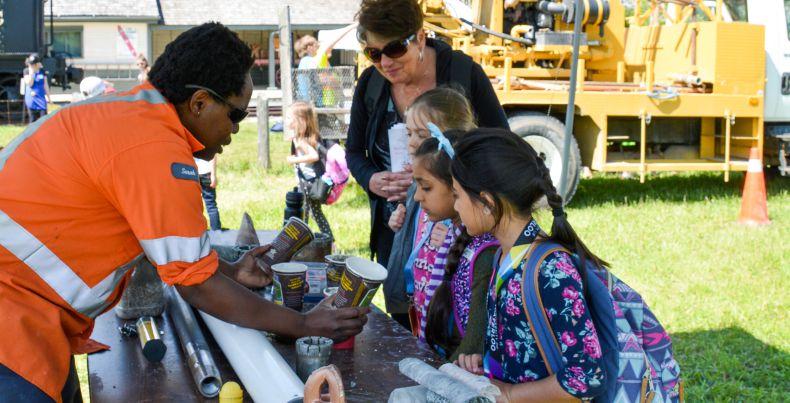
Gray and other dedicated volunteers and partners.
The attraction for young and old is hands-on fun. “We tried to introduce the practical aspect of the industry at the festivals and kids really loved it,” Gray says. “That whole idea of taking kids on a field trip to a place where they can learn in a fun and interactive way about water and the environment has sold itself across the province. So we created a not-forprofit to help the existing water festival committees develop and start new water festivals. It’s been pretty amazing.”
The festivals promote community-based environmental education by teaming up local organizations to create unique waterbased programs designed for children that are hands-on and interactive, Gray told attendees of the Canadian Ground Water Conference during a talk in 2016. These may include local and provincial governments, conservation authorities, stewardship councils, school boards, health units, local businesses and members from various provincial organizations.
“The overall goal is to educate students about the importance of water in their lives, and how they can take an active role in protection and in conserving water daily,” says Susan Reid, CWEC’s, who has worked for the Waterloo Wellington festival since 2000.
“There are 28 communities hosting a children’s water festival,” Reid says. “More than 60,000 children are educated about water-based issues and concepts every year through ground water events.”
The numbers alone show festivals work. Elementary grade school attendance is nearing 700,000 students, with more than 100,000 high school instructors and more than 100,000 adult supervisors educated each year.
The programs are in high demand, waiting lists are always full and the association has a limited capacity, Gray says. Why? “Once anyone comes to a water festival they can’t leave without thinking, ‘My kid’s got to go to one of these!’ ”
Another reason these events are effective, he thinks, is that they work at the grassroots level. “A trip from a concerned grandchild is worth five or 10 trips from a regulatory agent,” he says, quoting Susan Seacrest, who organizes the Nebraska ground water festival that
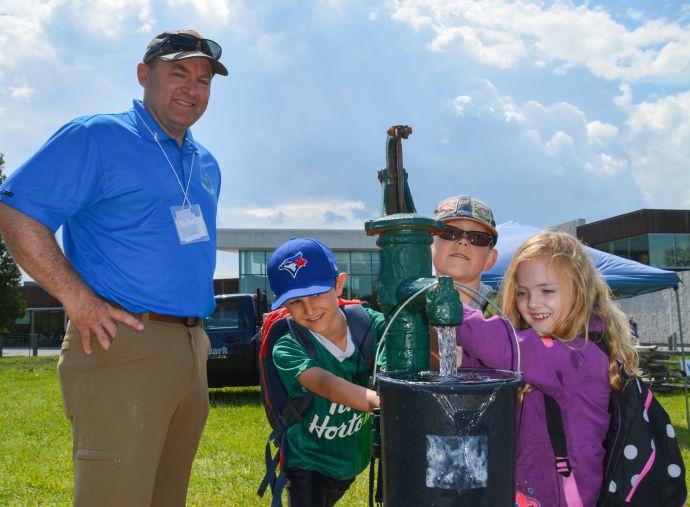
Organizer Peter Gray checks in with kids at the “Well Model” station during the Waterloo Wellington Children’s Groundwater Festival in May. Here a hand pump allows kids to experience at first hand how much work it was historically to get water from the ground to drink and use on a farm.
inspired Ontario’s.
“The neat thing is we were able to develop it so that many of the students come as grade school, then they come back as high school students as instructors,” Gray says. “So the whole concept gets reinforced at the high school level. The high schools love that concept. Some students have gone to university and come back to teach. It’s been very cool.”
In some communities that do not rely directly on ground water as a drinking source, the emphasis has shifted from ground water specifically to water protection in general, especially since Walkerton in 2000, Gray says.
The concepts of children, water, education and the environment are becoming more and more visible in the press and more and more relatable to everyday life, Gray says. “Education and knowledge is power and the goal is to try and educate kids so they help contribute to making wise decisions.”
“It is important to teach our youth about this important resource. Participants take home a newfound respect for the environment and one of the goals of any festival is to encourage stewardship of this resource,” Reid adds.
At a number of water festivals, well drillers attend the event and provide an activity centre for students to view,” she
says. “At the Waterloo Wellington festival, for example, Aardvark Drilling has set up a drilling rig and shown students core samples, and their equipment, so that students understand how a well works, and how we get water out of an aquifer.”
Gray believes the best way to learn and to really understand it is by being directly involved. The concept, known as experiential learning, differs from traditional classroom teaching methods where teacher stand at the front of the class and teach. “Not all kids learn that way. In fact, I learn best with something in my hands, just by doing something,” he says, noting that the school system looks for opportunities like these and it’s been a great partnership.
It’s easy to see that a festival is good for communities. The benefits to the industry may not be as obvious, but they are just as real. “It allows an exposure for students to the industry in a safe, informative setting,” Reid points out.
Gray says drillers who have participated get positive feedback from kids who have attended and now have a greater appreciation for the family business. But it isn’t just kids who attend. “For every five kids who attend, one adult accompanies them, and although the intention isn’t to brand their company while they are there, it does create awareness of who are the champions in the community.”
However, he stresses, there must be an element of genuine interest in education and community involved. That said, in Ontario, the CWEC promotes its partner organizations, in-kind and financial supporters in various ways. For example, all print material has a listing of these contributors, so teachers and other organizations receive this information in event guides and newsletters.
Currently the festivals are focused in Ontario, Reid says, although they have provided resources to communities in other provinces, among them Alberta, Manitoba, New Brunswick and Quebec. They would love to see the festivals catch on across Canada.
“It needs a local champion, Gray says. “If you look at the individual makeup of each of those organizing committees in each of those communities, the champion comes from different places. Sometimes it’s a local government; sometimes it’s a health unit. It really varies depending upon the makeup of the community and that’s why they’ve survived and why they’ve continued to flourish, because the local community adopts it and then makes it their own. It’s really that kind of homegrown, grassroots approach that I think people can own.”
guardians of the community. They know how to access and properly drill wells and make a supply safe for the public. That’s a message that continues to need to be told. And who better to tell it than the guys who are installing it and who are licensed to do that?”
He suggests anyone who wants to start a festival make it their own by linking it to
Festival” kit.
Gray is especially proud of a complementary program he spearheaded called Just Add Water, which is carried out in partnership with the Ontario Water Works Association and the Ontario Trillium Foundation. He and other volunteers outfitted a dozen enclosed trailers with 10 activity centres. “All you have to do is hook up a trailer to a truck, drive it to a site, take out the activity centre and add water,” he says. Each centre comes with a fairly straightforward manual that is easy for instructors to understand. The program offers easy access to educational tools and has caught on in many rural communities in Ontario, including indigenous communities.
Although the trailers are currently available only in Ontario, anyone in another province could approach a funding organization similar to the Trillium Foundation and ask for funding to set one up in their province, he says. “I think we’ve made it pretty easy now for someone else to do it, and the response is going to be, ‘Here you go. Here’s how to start.’
“It’s a great opportunity,” he adds. “All you have to do is find the closest water festival and get involved. And only good things are going to come from that.”
Gray encourages water well drillers to start or participate in a local children’s ground water festival. “One of the main reasons we want to have our contractor friends there is that they are the best
the flavour of their own community. The individual festivals have websites and all of the festivals share ideas, equipment and resources. “It’s an inclusive bunch, so all you have to do is ask for help,” he says. Would-be champions can get in touch with Gray and Reid at the CWEC to start a festival in their community. Also, the CWEC website has a list of contacts and anyone can buy a “Starting a Water
Beauregard_7x3.25 3/21/06 7:45 AM Page 1
To learn more, visit the Children’s Water Education Council website at www.cwec.ca.


The compact CME-55LCX features a new 130 horsepower diesel engine and can crank out up to 12,100 foot-pounds of rotary torque. That’s more than any other drill in its class.
Equipped with the standard 20’ or optional 22’ mast, it’s perfect for typical ever yday operations. But on jobs where overhead clearance gets tight, t he CME-55LCX can quickly transform to low clearance mode. The overall set-up height when mounted on the CME-300 tracked carrier, is then reduced to 12’1”. Low clearance sheaves allow full use of the hoist lines
That means you can take on jobs under service station canopies, bridges, or other overhead rest rict ions that others can’t.
T h e CME-55LCX is avai l a bl e wit h m any options to help get the job done as efficientl y as possible. It can be equippe d wit h s l i d e b ases, au g er rac k s, too lb oxes, hy d rau l ic ro d h o ld er/ b rea k out wrenc h systems, an d more.
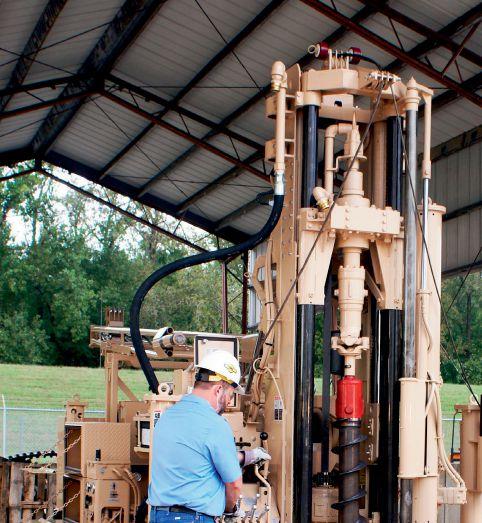



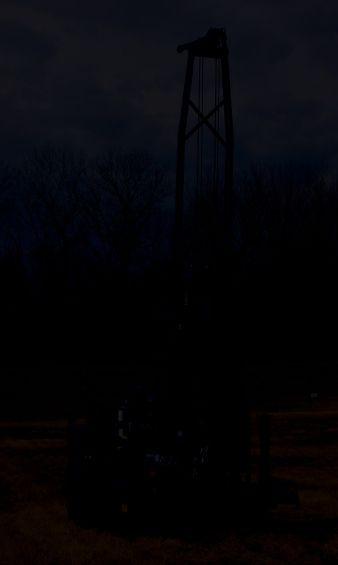

The optional automatic SPT hammer even has a secondary lifting system for low clearance situations.
The CME-55LCX and the CME-300 remote controlled tracked carrier make an excellent team. Since the CME-300 is desi g ned speci f ica lly for carr y ing CME d ri ll ri g s, t here are no compromises. It has t he b est center of gravity for b ot h mobi l ity and d ri ll ing. You won’t f ind a more rugge d carrier in its cl ass. And since the rubber tracks will not damage most pavement, you can also use this rig anywhere you might use a truck-mounted drill.
Give us a call and find out how the new high-torque CME-55LCX low clearance drill can give you more power and more versatility for more production.


AThe Ontario Ground Water Association drew a good crowd for its annual convention and general meeting at the tranquil Nottawasaga Inn, Resort and Conference Centre in April.
by COLLEEN CROSS
Hydrogeologist Bill Clarke presents the Earth, Wind and Fire award to Prof. Peter Russell, a key member of the University of Waterloo’s department of earth and environmental sciences, founder of the Earth Sciences Museum in 1967 and author of children’s books about ground water.
This year the event was held immediately following a regional training meeting on best practices.
Friday was training day, with more than 80 members attending to get up to date on best practices.
A silent auction run by OGWA staff Anne Gammage and Debbie Stojkovic that began at the Friday night meet-and-greet had members vying with unidentified bidders for everything from maple syrup to water-level meters to a day’s excavator rental. The auction featured donations from Canadian Pipe, Franklin Electric, Wellmaster Pipe & Supply, Pompco, Atlas Copco, the Rideau Group, and many others.
Saturday morning was given over to division meetings and the annual general meeting, with president Darren Juneau presiding for the last
time before the end of his term. Juneau received an enthusiastic round of applause for his energetic leadership.
Collaboration seemed to be the unofficial theme of the convention. The association is close to formalizing a partnership with the Canadian Water Quality Association and the Ontario Onsite Wastewater Association that will see the three organizations, which already work together on pertinent issues, collaborate and share information. In an initiative spearheaded by Johnny Wilson, the OGWA is also working on a partnership with the University of Windsor’s earth and environmental sciences department aimed at reaching out to the next generation of scientists.
After enjoying a buffet lunch in the Riverview Restaurant, members attended two afternoon
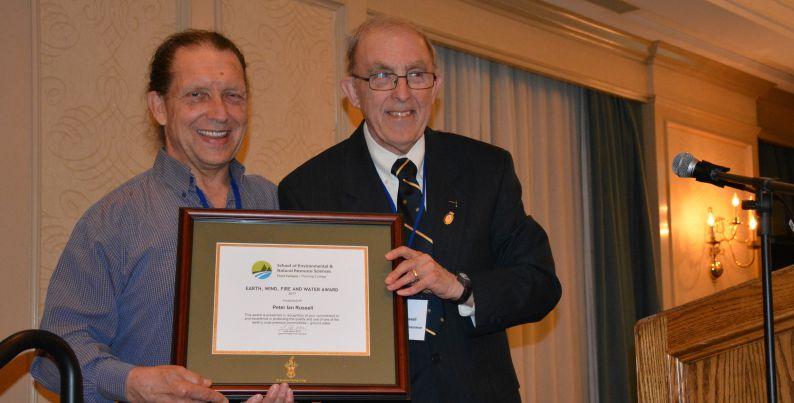
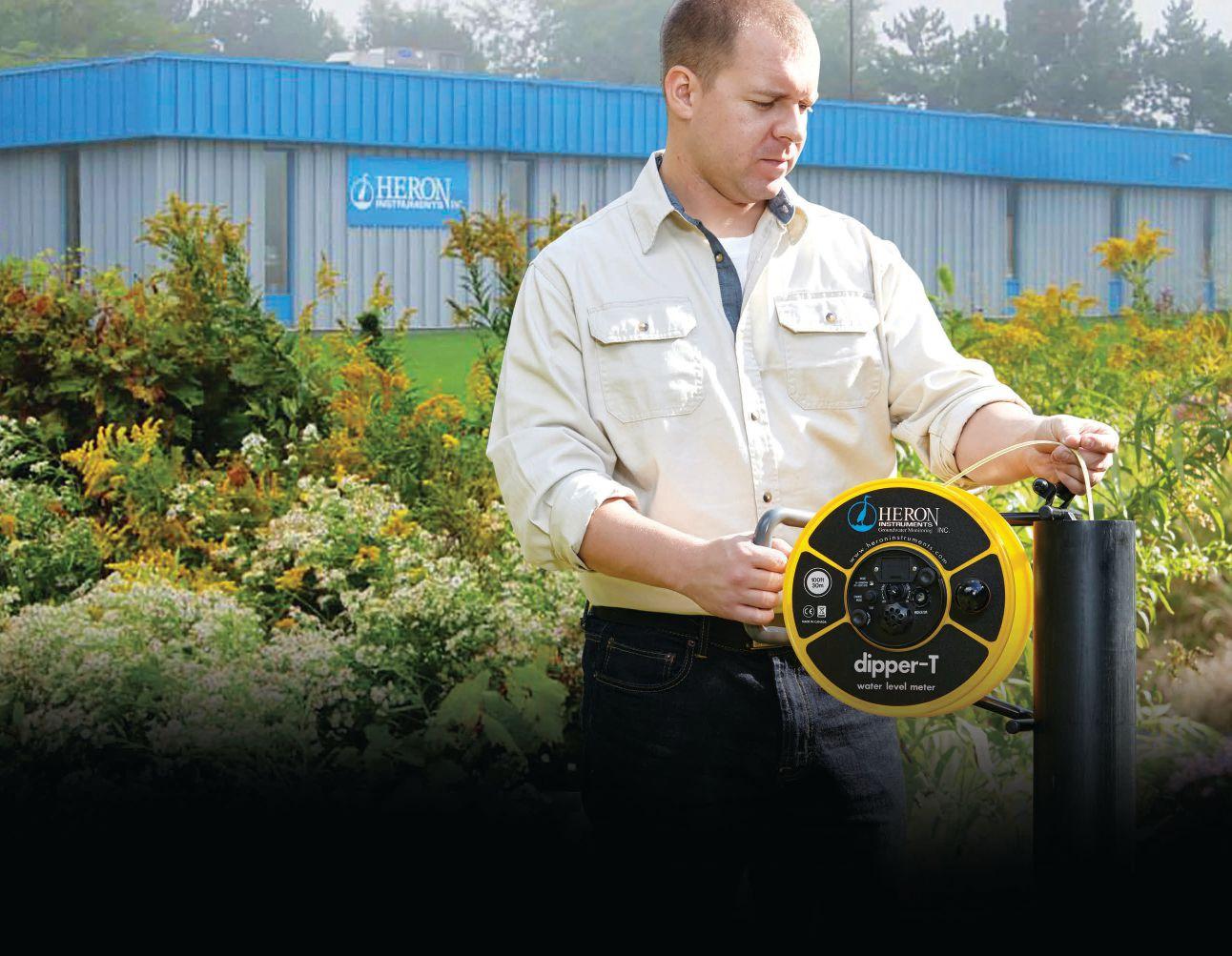
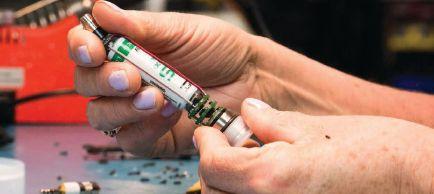


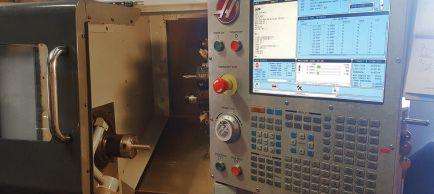

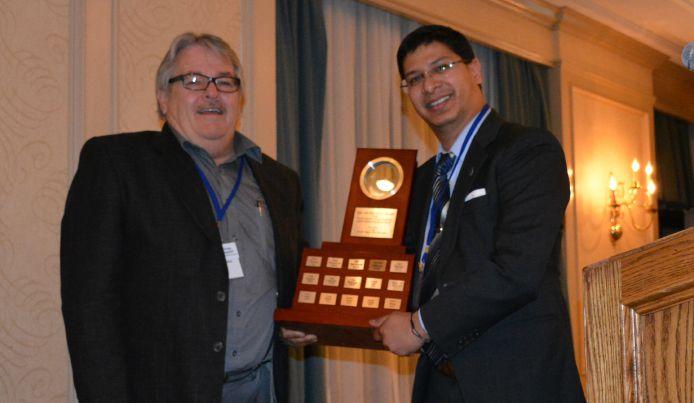
learning sessions.
Ellaline Davies of Safety Works Consulting went over the Ontario Workplace Safety and Insurance Board’s new rate framework model and took general questions about requirements. The framework, which Davies expects
to take effect in 2019 or 2020, is meant to reward contractors who hold clean records for three years by setting rates based on performance.
Following this well-attended session was an earnest discussion about collaboration between drillers and the
scientists and engineers they work with. Such issues as worksite delays, the importance of site meetings and the need to reach out to the next generation of hydrogeology and engineering students were discussed.
“That was the most productive meeting I’ve seen in a few years. It was really good,” longtime driller and past president John Wilson told Ground Water Canada that evening during the awards dinner.
OGWA executive director Craig Stanton thanked outgoing president Darren Juneau and welcomed incoming Bryan Watson and the new board. They cheered as Kevin Wong, director of the



The OGWA is also working on a partnership with the University of Windsor’s earth and environmental sciences department.

PROUDLY SERVING THE GROUNDWATER INDUSTRY SINCE 1992: Lackner McLennan Insurance has made it their business to protect other businesses, and their specialty program for the groundwater industry has been making waves.
PROGRAM DESIGNED FOR:
• Water Well Drilling Contractors
• Pump Installation Contractors
• Geo Thermal Heating Contractors
• Hydro Geologists / Geo Scientists
• Manufacturers / Suppliers
COVERAGES INCLUDE:
• Automobile & Fleet
• Property & Commercial Liability
• Environmental Impairment Liability
• Errors & Omissions (Professional) Liability
• Bonding
Directors & Officers / Employment Practices COVERAGE: A liability program designed to provide you with defense costs arising from an employee dispute or issue with one of the Ministries. (Labour, Environment, Revenue)
Canadian Water Quality Association, accepted the Archie Watt award.
Stainton presented the Tenacity Award to Stephen Bleizeffer of Lackner McLennan Insurance.
But perhaps the highlight of the evening was Prof. Peter Russell’s reading of his children’s book, Wally & Deanna’s Groundwater Adventure, as images displayed on the big screen. Prof. Russell, who was presented with the Earth, Wind and Fire award by hydrogeologist Bill Clarke, invited children in the audience to come up to the front and demonstrate – by wriggling energetically – how a drop of rain water “percolates” through gravel, sand, silt and rock.
Afterwards attendees of all ages thronged the author afterwards for autographed copies of his books.

Switch inside extra large case for easy wiring
Swivel union available switch case does not need to pivot
Universal control switch works on all brands of motors
50 field installations in use, some over 9 years still working
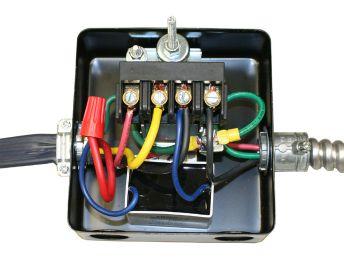
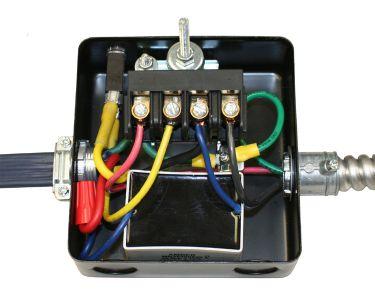


by Shep Hyken
When was the last time you called your business? I recently spoke at a conference. After the speech, the client gave me a gift: the list of everyone in the audience with their contact information. She suggested I pick up the phone and let everyone know they should hire me to speak at their next meeting. (Now, that’s a nice gift!)
S o, a week later our team picked up the phones and started “smiling and dialing.” We connected with a good number of the people who responded positively to our calls, but that’s not what this is about. It’s about how a company’s phones are answered – and you can probably guess, this is more rant than rave. The number of companies that messed up their first impression was ridiculously high. About a third of the way into the calls I realized we should have done a formal study.
When was the last time you called your business? Take time to do this. Find out if it’s anything less than easy and efficient.
To begin with, there are two main ways the phone call could be answered: live or by an Interactive Voice Response system, also known as IVR.
L et’s talk about the live answered phone first. I’ll categorize a live response as either an operator who would connect me to the executive, or a direct number to the executive that is picked up by an assistant or voice mail. Most of these calls went well. The people answering the phone were pleasant and helpful. The voice mails were what you would expect: the executive leaving a friendly and direct message. And, on a few occasions we actually got through to the executive on the first try.
And, then there is the IVR. Not all Interactive Voice Response systems are created equal. One was great. You simply had to announce the name of the person you
wished to speak with. The system confirmed your response, and then connected you to the person. Wonderful! But, some of the ways companies set up their IVRs were terrible. Having to listen to a menu of five or six, and sometimes more, choices can be frustrating. Some of the systems asked for us to key in the person’s name. A few set up their IVR efficiently, and it was easy. But, in many cases where the phone was answered by a computer, it wasn’t.
The point of this is to make you think about the effort a customer – or anyone else – must make to reach someone in your company. It may sound like I’m against a computer answering a phone. No, that’s not the case. I’m against a computer – or a person – answering the phone if it creates any amount of difficulty for the person calling in.
By the way, I also understand that an assistant must also be a gatekeeper whose job is to screen calls. Just handle the call well, with respect and diplomacy. Any friction or extra effort the customer goes through to reach their party starts the call at a deficit. The first impression of that interaction is ruined.
S o, back to the original question: When was the last time you called your business? Take time to do this. Find out if it’s anything less than easy and efficient. If it is, what can you change to better manage this important interaction that sets the tone for whatever is to follow? What can you do to manage this moment of truth and create a moment of magic?
Shep Hyken is a customer service expert, keynote speaker and New York Times bestselling business author. For information, visit www.hyken.com. For information on The Customer Focus customer service training programs, go to www.thecustomerfocus.com. Follow on Twitter: @Hyken

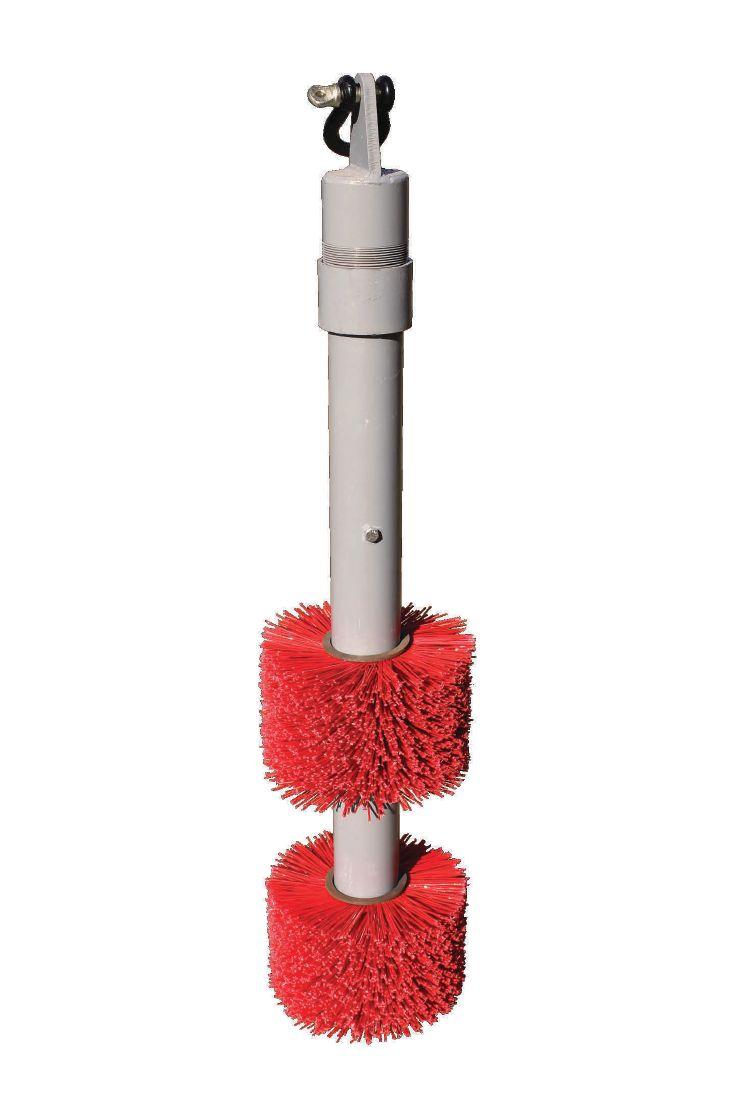

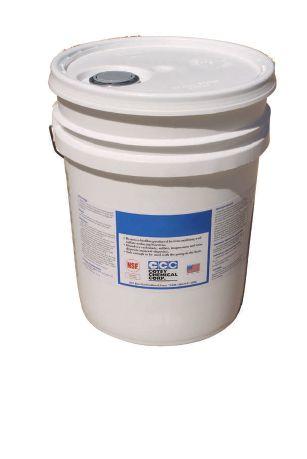
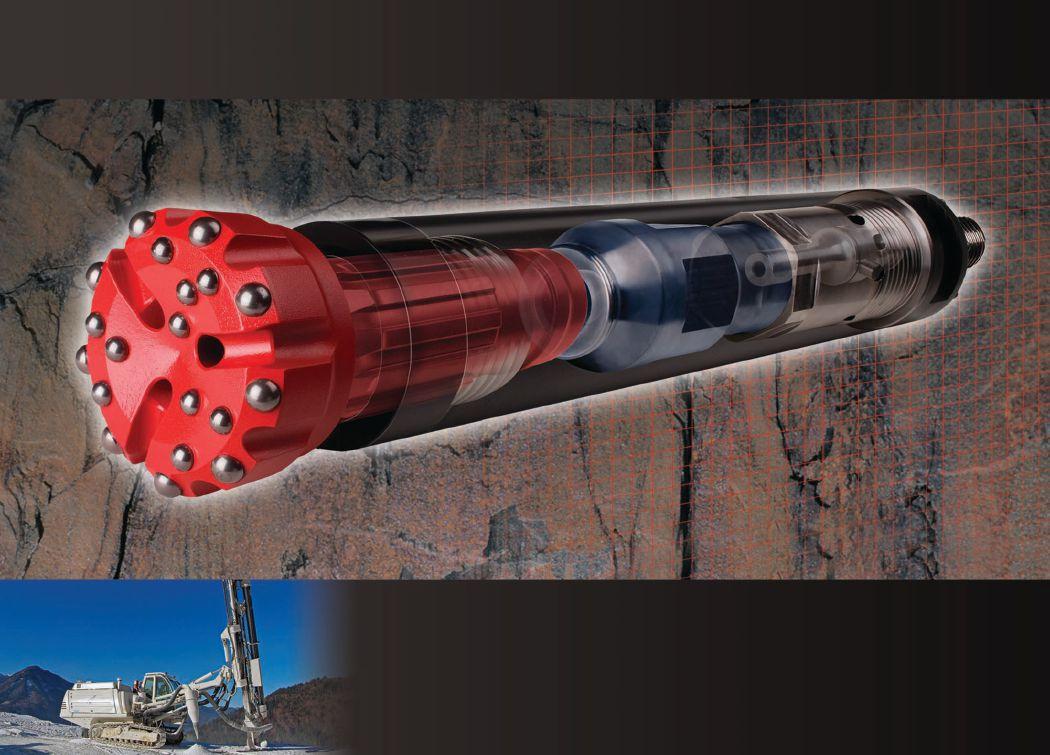




make the money. They didn’t really care about the service they delivered us.”
“Now, the wells are all required to be drilled so that they’re using actual ground water in a protected aquifer,” he adds.
So what changed to result in progress? First Nations took control of their own water. Tomma says he is seeing the emergence of social, community, band and individual conscience. “We realize that if we don’t do anything about it, nobody’s going to,” he says. “And that’s when we start seeing the turnaround and things start happening for the better.”
“Now that a lot of our bands in B.C. are assuming responsibility and control, we are able to deliver to our people a better service than what was provided before,” he says. “And at our annual assembly, we can have 100 to 150 water operators there, and for the most part, they are extremely dedicated to their jobs. They take it seriously. There’s a lot of pride in it.”
Being involved with the design and delivery of the water system is a critical part of the success. “A lot of times in the past, somebody would come in and say, ‘This is what we’re going to give you, accept it,’ ” Tomma says. “And now that we have a voice in it, we have an educated opinion on what we accept or not.”
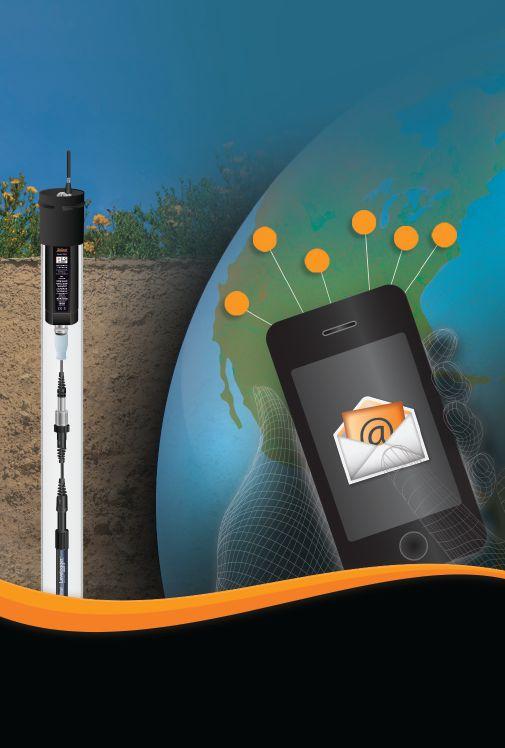
Training is a critical. Hutchison says that until certification was made mandatory, it was difficult to retain water operators. “There’d be a very big turnaround, not very much retention,” he says. “So that is why the chiefs wanted us to start training our own people, and that’s how we started up with the Centre of Excellence.”
Keewaytinook Centre of Excellence is a provincially accredited training facility in Dryden, Ont. Training can take place at the centre or arrangements can be made to deliver it at other locations. Training meets the certification requirements of Ontario’s Ministry of Environment and Climate Change, and graduates of the core program are ready to manage water treatment facilities without operational support or oversight. Continuing education classes also are available for operators at all levels.
“We not only train for the operator licence itself, but there were so many out there that were working without even a GED [general education degree],” Hutchison says. “We’ve put on a GED course as well to help students get to the standards so they can start doing their OIT [operator in training].”
Tomma also talks about the positive effects of education. “When the First Nations started assuming the responsibility of looking after their own water, one of the big things I’ve noticed is that the level of training that the operators are receiving is first rate,” he says. “With the level of training that we have and the people who are doing the job now, we are able to alleviate quite a bit of the problem. We’re not solving it, but we’re alleviating quite a bit of the problem.”
And best practices for drilling, installing, and maintaining wells are followed. “In the past, on our reserve, at least, the well was just considered a pipe in the ground. There was no protection. Nobody maintained it,” Tomma says. “Now, most bands that have the capability have what’s called multi-barrier protection training. Maintenance is one of the big things. Cleaning, monitoring. So now that everybody looks after the well, it’s not just a pipe in the ground that the water comes out of. We maintain our wells now.”
Qualified support is important. “We have trained operators in our public works office in Dryden,” Hutchison says. “All these other communities are under this licence, so if there is a problem indicated by the continuous monitoring, it lets us know before it becomes a big problem. Then our operators here can either phone up to the community and help them through verbally, or if it’s too big a problem, we’ll send them up there.” “We never got that support before.”
Though there is some success, it is far from being a perfect system. There are still issues with funding to ensure the treatment plants can continue to run, including the operators’ pay. “The operators are not paid to the standard that municipal operators are paid, even though they have the same responsibilities,” Hutchison says.
Road access is still a challenge in many communities, especially if equipment needs to be replaced. Hutchison



How the ground water industry can help Stainton would very much like to see properly drilled, installed, and maintained wells in more First Nations communities. He believes ground water should be used wherever possible, that each home should have a well, that its occupant should know how to maintain it, and that this should be accomplished in accordance with regulatory standards, which in the case of Ontario are the Wells Regulations.
“If each individual home had its own well and pumping system, the occupant would conceivably incur a sense of ownership and responsibility,” Stainton says.
Additionally, this approach takes the infrastructure emphasis off linking communities to a municipal-style system that relies on substantially treated and distributed surface water.
“When one [well] is down, it’s not the whole village, and ground water is generally much less likely to require the heavy treatment that surface water demands, ” he says.
Miller sees potential in partnerships and an organizational structure to make the best use of limited resources.
“Whether it be with a tribal council, whether it be on band council, I see the water well associations acting as resources,” she says, adding that the associations are the industry experts. “It’s not creating employment for the water well drillers or anything like that. It’s acting as resources. You start with some kind of partnership arrangement with the federal government or medical services or Indigenous and Northern Affairs Canada which have infrastructure control.”
For example, there could be partnerships to design and develop delivery programs.
“Certainly, I think one of the greatest needs we have in the First Nation communities is education for the well owners on the care and maintenance of wells,” Miller says, adding that education programs need to be one on one and at the community level. “For lack of a better word, call it outreach work.”
points out that it is not just the cost of the piece of equipment but also the cost of flying it up there and paying someone to do the repair.
“It’s not like we have anybody who can be there in a half an hour,” he says. “So everything’s just compounded, and it adds stress for the operators and everybody else.”
And, of course, there are still so many DWAs.
In addition to his role as public works manager for the Keewaytinook Okimakanak tribal council, Hutchison has recently taken over the Safe Water Project (http://safe-water-project.ca) from his predecessor Barry Strachan, who designed the program.




PROUDLY SERVING THE GROUNDWATER INDUSTRY SINCE 1992: Lackner McLennan Insurance has made it their business to protect other businesses, and their specialty program for the groundwater industry has been making waves.
PROGRAM DESIGNED FOR:
• Water Well Drilling Contractors
• Pump Installation Contractors
• Geo Thermal Heating Contractors
• Hydro Geologists / Geo Scientists
• Manufacturers / Suppliers
COVERAGES INCLUDE:
• Automobile & Fleet
• Property & Commercial Liability
• Environmental Impairment Liability
• Errors & Omissions (Professional) Liability
• Bonding
Directors & Officers / Employment Practices COVERAGE: A liability program designed to provide you with defense costs arising from an employee dispute or issue with one of the Ministries. (Labour, Environment, Revenue)
STEPHEN BLEIZEFFER
519.579.3330 ext. 311 sbleizeffer@lmicanada.com www.lmicanada.com
your business. our policy.
The project, which emerged in 2014, is unique because participating communities receive focused training that helps their members become certified local water operators. While they pursue certification, the project provides support by way of licensed operational personnel who are available to assist local operators on a 24-7 basis. Communities also receive industry-leading technology that allows them to continuously and remotely monitor the quality of their water and immediately address any issues that arise.
Currently, the communities and the water treatment plants involved in the Safe Water Project rely on surface water, Hutchison says, adding that the infrastructure was there already but maintenance and repair were required.
Hutchison would like to see training at the Centre of Excellence expand to include more on ground water wells and well maintenance. “There’s interest in it,” he says.
He also would like to see the Safe Water Project replicated in other communities. He says they train operators from other tribal councils and from municipalities.
“The initiative is capable of eliminating boil water advisories and empowering communities to manage their own drinking water,” Hutchison says. “By providing the training for our own communities, we’re providing employment in communities that have none. People are starting to take
2016-12-08 11:22 AM
In addition to his role position with the Little Shuswap Lake Indian Band, Tomma is a founding member and representative of the southeast region for the First Nation Operators Water Net for British Columbia and Yukon Territories, which is linked to Res’eau Water Net (http://www. reseauwaternet.ca). A “Community Circle” model is used to solve water problems in small systems and to meet the site-specific needs of systems serving fewer than five homes. This approach places as much emphasis upon understanding and respecting the culture and unique requirements of end users as it does on technological development, economic considerations, operations and maintenance issues, and environmental stewardship. Tomma says the Community Circles are panel-style and address the needs of First Nations and other communities that need and share the delivery of palatable water.
“It’s sort of like a think-tank,” Tomma says. “People get together and talk. That’s the first step: to talk and identify the needs.”
Both Hutchison and Tomma acknowledge that while some positive steps are being taken, there is still a long way to go. “In my band, when I first started this job [14 years ago], we were on a boil water advisory,” Tomma says. “But through training and hard work, we were able to get that lifted.”
And that’s what it will take in all the other communities that need help. “People tend to report the good things. They tend to report the successes, not what should be done,” Tomma says. “Eventually when our organization gains a better voice, we can become an advocate and we’re going to focus on the ones that need help, not just showing people the good we’ve done. We’re going to say, ‘Look, this band needs help,’ and we’re going to try and help them and make sure they gain what should be a basic human right: clean water. What I say to all my counterparts in the other tribal councils around us is that it’s not about us. We’ve got to work together because it’s about the people. In order
to get things changing, we have got work together,” says Hutchison, who describes himself as a very vocal advocate, especially for northern communities. Maybe that starts with a voice that finally, hopefully, someone is hearing. “That’s one of the great things about it now: when the First Nations take the lead in things and
they have a voice and they’re actually listened to a little bit more,” Tomma says. “I can’t say why, but that seems to be happening.”
Carolyn Camilleri is a Toronto-based writer, editor, and content strategist. She has been writing for consumer and trade magazines, as well as national businesses and organizations, for more than 15 years.
For more on drinking water quality, visit www.groundwatercanada.com > Issues > Water Quality

With In-Situ, you trust your water monitoring equipment and data to be accurate and reliable, every time. We’re in the field 24/7, so you don’t have to be. in-situ.com/gwc
The residents of the Town of Gibsons, B.C., are very proud of their aquifer. In 2005, the town’s fresh, clean, untreated drinking water won the title “Best-Tasting Water in the World” from the Berkeley Springs International Water Tasting competition.
by CAROLYN CAMILLERI
Then from 2009 to 2013, an exhaustive mapping study of the aquifer was completed. In addition to providing the town’s engineering and planning departments with an accurate picture of the aquifer and the threats to it, the study brought public education and awareness to a whole new level. Terms like aquifer, aquitard and even ground water may not be common in most Canadian communities, but in Gibsons they are part of the local lingo.
So when The George, a waterfront hotelcondominium-marina project, was proposed, developers were up against more than just town council. A heated controversy that ensued over the project’s potential impact on the aquifer stalled work for over two years.
In 2015, the aquifer mapping study led to another key step forward: Aquifer Protection Development Permit Area No. 9 (DPA 9).
DPA 9 is located over the Gibsons aquifer and the ground water system that supplies potable water to approximately 73 per cent of Gibsons’ residents and sustains habitats as a base flow or discharge to surface water sources, including several area creeks. To avoid contamination of the aquifer and penetration of the aquitard confining it, permits must be obtained for any activity involving construction, excavation, surface drainage, and the storage, handling, manufacture, and use of products on land within DPA 9. Strict guidelines outline the permit-application process, and applications are reviewed by the same hydrogeology firm that completed the aquifer-mapping study.
“We have set very high standards for
construction in the aquifer-vulnerable areas,” says Dave Newman, director of engineering for the Town of Gibsons. “As far as any development application is concerned, the overarching position of the town is that we are not prepared to compromise the health and integrity of the Gibsons aquifer – full stop.”
Newman says there have been several opportunities to apply DPA 9 since it was implemented, and it has been a good education process for developers and the town. But legislation to protect the aquifer hasn’t stopped there. Gibsons is also leading the charge when it

Figure 15 from the aquifer mapping study by Waterline Resources Inc. shows the study’s boundaries.
comes to thinking differently about asset management.
Most communities in Canada are involved in managing engineered assets – infrastructure such as roads, water, waste water and storm water – and have shifted to a systematic business process for making strategic and operational decisions about municipal assets over their entire life cycle rather than merely maintaining assets.
“The emphasis of asset management is on a process for operating infrastructure throughout its full life cycle in the most sustainable and cost-effective manner,” Newman says. “In Gibsons, we are using these same principles for managing our natural assets.”
Towards an Eco-Asset Strategy in the Town of Gibsons outlines the plans and objectives for the long-term management of assets, including the aquifer, which filters and stores the town’s drinking water, and the creeks, which convey storm water.
“A key component of natural-asset management is that with proper operations and maintenance practices with appropriate environmental consideration, a given natural asset can be used in perpetuity with no replacement cost, which is a costly component of engineered assets,” says Newman.
The strategy lists four objectives:
1. Managing risk by ensuring that Gibsons has a clear understanding of what services they receive from natural assets, such as flood prevention, provision of drinking water, and rainwater management, and what it would cost to replace the
natural asset with an engineered alternative if the assets were degraded or destroyed
2. Saving costs by managing natural assets in a way that they will provide services at lower cost and in perpetuity
3. Maintaining healthy ecosystems as a result of sound assetmanagement strategies
4. Managing the asset to provide services for future development without degrading the condition
Support for these measures – both the DPA 9 and the ecoasset management strategy – has been solid. And it’s not just a staff initiative, Newman says. “The town council is very much on board with the concept of natural assets and the idea of integrating it into our asset-management plans.”
“It means we have money set aside for the care of creeks and monitoring of our aquifer without it being on the chopping block of a capital project,” he says. “It’s integrated into our operations and maintenance plans, and it becomes commonplace that we are taking care of our natural assets as much as, if not more than, we are our engineered assets.” Moreover, thus far, there hasn’t been any pushback or opposition from the public or developers.
“My impression is that there’s an appreciation of the stakes that we’re playing with,” Newman says. “This is our drinking water supply and it’s untreated. People seem to be able to embrace that. It seems to be something that people are receptive to.”
For the full article, visit www.groundwatercanada.com.







Hoskin Scientific has a line of fully automated portable samplers for environmental, wastewater, surface water and industrial treatment markets.
The YSI ProSample models are available in singlecomposite or multi-bottle options.
Lightweight and easy to use, they come with a proprietary peristaltic pump for highly accurate sampling based on time, flow or weather event, the company said in a press release. Once an event occurs, or during normal operation, the log data is easily extracted from the sampler via a USB drive and can be taken to a personal computer for further
evaluation.
Other features include easy tube replacement for minimal downtime; springloaded roller bearings in the peristaltic pump to provide longer tubing life; and long battery life providing up to 550 samples per battery charge.
www.hoskin.ca
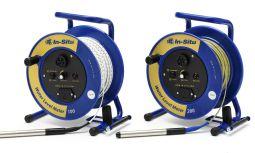
In-Situ’s new Water Level Meter 100 and 200 include static and drawdown modes that allow users to switch from static level readings to drawdown mode for lowflow and pump tests.
The IP68-rated probe can be submerged in depths of up to 300 metres (1,000 feet) to determine the bottom of a well, the company said in a press release. It features a
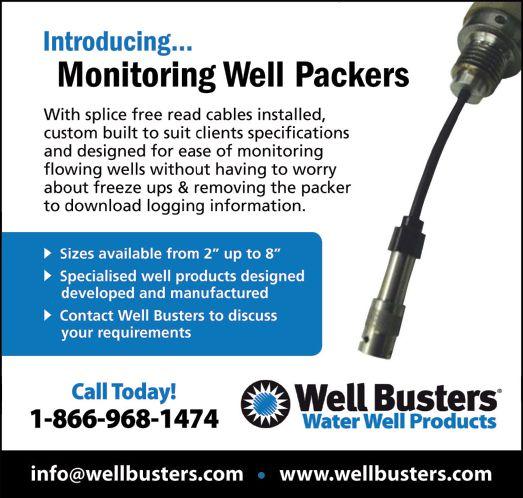
safety disconnect that allows the probe to be released if it gets trapped inside a well. The quick-connect probe can then be easily and reliably replaced in the field, with no need to send the meter in for repair, said the company, a manufacturer of water level instrumentation, in a news release.
The Water Level Meter 100 has Kevlar-reinforced polyethylene tape and is laser engraved to provide a long-lasting solution. The Water Level Meter 200 uses ASME-certified high-tensile steel tape that is encased in a polyethylene jacket to provide strength and durability.
Both models are offered in lengths ranging from 30 metres (100 feet) to 600 metres (2,000 feet).
www.in-situ.com

The Solinst LTC Levelogger Edge is a compact, sealed instrument that provides reliable datalogging of water level, temperature, and conductivity measurements.
The 7/8-inch by 7.5-inch datalogger provides several enhanced features, including an eight-year battery life, memory for 27,000 sets of readings and six pressure ranges. It also features a titanium ceramic PVD corrosion-resistant coating.
The instrument’s fourelectrode platinum con ductivity sensor has a wide calibrated conductiv-
ity range, with autoranging from 0 to 100,000 µS/cm. For highest accuracy, calibration is from 50 to 80,000 µS/ cm, the company said in a press release.
The Levelogger Edge is compatible with other accessories from the company, including the DataGrabber data transfer device and Solinst Levelogger App and Interface. It can also be used with a LevelSender telemetry system for remote wireless monitoring.
The instrument is designed for monitoring salinity and saltwater intrusion; road salt, agricultural and stormwater run-off monitoring; tracer tests, and providing a general indication of water quality.
www.solinst.com

Silibeads glass beads are a promising alternative to gravel filtration and the brainchild of German company Sigmund Lindner.
The company was at the U.S. National Ground Water Association’s Groundwater Week event last December where representatives said the zirconium oxide and zirconium silicate beads are more consistently sized and less prone to breakage and encrustation than quartz and gravel.
The beads are available for many applications, including as water filters. According to the company, they are microbiological, chemically
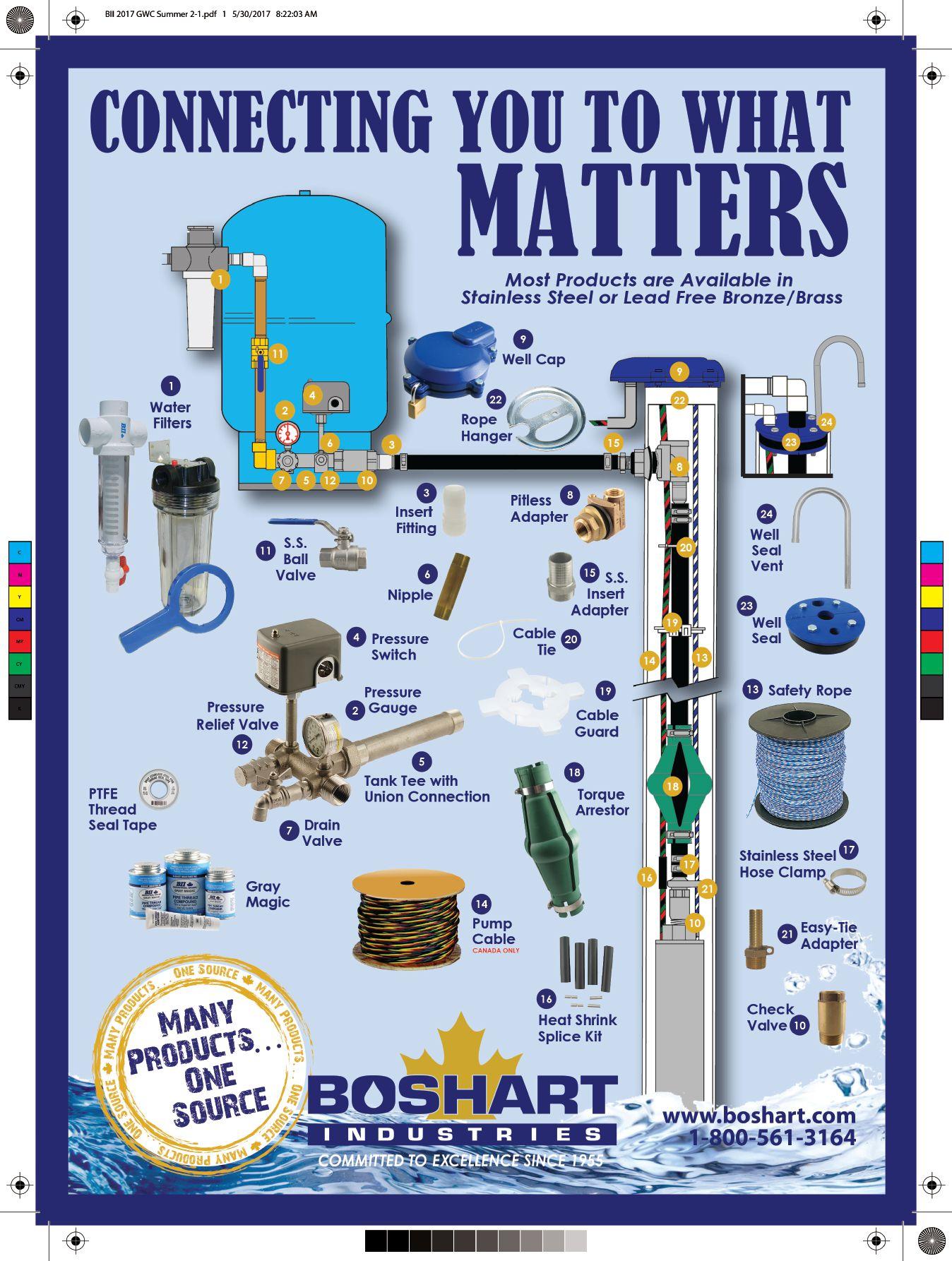

pure, precisely spherical and uniform. They are designed to conserve backwash well water and suit maximum well capacity.
The beads have a high crush strength and abrasion resistance compared to gravel, the company literature says.
www.sigmund-lindner.com

A new book by the American Society of Civil Engineers, Total Maximum Daily Load Analysis and Modeling: Assessment of the Practice,
reviews the available tools for estimating the maximum amount of a pollutant that a body of water can receive in a day and still meet water quality standards.
The TMDL is an important means of preventing deterioration of the U.S. water supply and reversing the effects of both point- and non-point source pollution on water quality, the society said in a press release.
The 170-page publication addresses concerns about the selection and use of analysis and modelling tools for TMDL development and implementation. The source, capability, and applicability of various models and procedures are considered.
Environmental engineers, watershed managers and water quality regulatory officials may used the book to make informed selections of appropriate analysis and modelling tools for TMDL development or implementation studies, the society said. www.asce.org

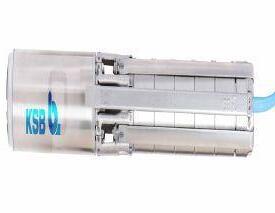
KSB Aktiengesellschaft, based in Germany, has launched a new type series of submersible borehole pumps that covers discharge heads of up to 550 metres and flow rates of up to 21,500 litres per hour.
The UPAchrom 100 series is designed for water supply and irrigation applications and for use in small systems to draw down ground water levels, KSB said in a press release.
The pumps meet applicable ErP regulations, are certified for drinking water to French (ACS) and United States (NSF) standards, and can safely be used for drinking water applications, the company said.
Pump components are made of stainless steel and
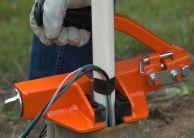
pump sets’ robust design makes it capable of handling water with a solids content of 50 grams per cubic metre.
The pumps are driven by water-filled canned motors with a rating of up to 7.5 kilowatts or by rewindable submersible motors with ratings of up to 18.5 kilowatts for very high heads.
The sets are maintenancefree with self-adjusting thrust bearings and pressure-balancing diaphragms.
www.ksb.com
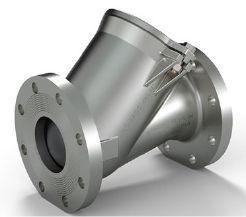
Flomatic Corporation has a new Model 408S6 ball check valve that meets AWWA standard C508 for check valve flanged to flanged lay lengths.


The valve body features a 316 stainless steel body and access port. These valves are designed to meet demanding waste water and storm water pumping applications. They are available in a fourinch size and other sizes will be available in the future. The Model 408S6 meets the standards as set forth in the Consolidated Appropriations Act of 2014 – “American Iron and Steel (AIS).” www.flomatic.com
The new Aries Explorer borehole inspection system monitors water wells at depths to 365 metres (1,200 feet). The portable system is easily operated by one person to maintain borehole integrity and reduce costly and unnecessary repairs, the company said in a press release.
The 45-millimetre (1.75inch) diameter camera operates in 2- to 16-inch diameter boreholes.
The dual-view camera features low-light sensitivity with 480 TVL lines of resolution. The down-hole view offers an 86-degree wideangle view. The side view provides 360-degree continuous scanning.
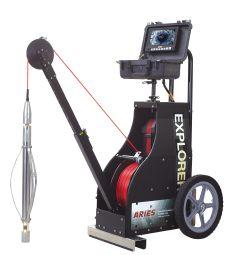
All components, including the control unit, are mounted on a compact cart. Manual focus and iris adjustment provide clear images in difficult lighting conditions and a forward-facing LED array allows users to adjust the intensity.
Two models are available with a choice of 183-metre (600-foot) or 365-metre (1,200-foot) Kevlar braided coaxial cable.
www.ariesindustries.com
A new book, Operational Stage of the Well, explains various factors and how they impact well operation and maintenance.
Through years of research, fieldwork and laboratory work, the authors have developed a method for assessing information and assigning a value to a well in regard to its health, said the book’s publisher, the National Ground Water Association Press, in a news release. The information can extend the operational lifespan of existing wells while providing valuable information into the design and operation of new well systems.
The authors are longtime ground water industry professionals Thomas M. Hanna, Michael J. Schnieders, and John H. Schnieders. Hanna, who wrote the 2006 NGWA Press text
“Guide for Using the Hydrogeologic Classification System for Logging Well Boreholes,” has led several NGWA workshops and training sessions for other groups. John Schnieders, author of the 2003 book Chemical Cleaning, Disinfection & Decontamination of Water Wells, gave the NGWA Foundation’s William A. McEllhiney Distinguished Lecture Series in Water Well Technology presentation in 2002. Michael Schnieders, his son, is delivering the lecture this year. He is a professional geologist, ground water hydrologist and senior consultant for Water Systems Engineering Inc. in Ottawa, Kan. Schnieders’ primary work involves well characterization and consulting on the operation and maintenance of potable water systems.
The book is also available in an electronic format.
www.ngwa.org
by Jeff Wahl
The use of ultraviolet, or UV, systems has become commonplace for keeping bacteria out of rural water supplies. If you own a home in the country, it is very likely that an ultraviolet disinfection system (also known as blue light or UV sterilizer) is installed either at the kitchen sink or where the water enters the house. The goal of this column is to raise awareness regarding the operation of these systems and the potential ramifications of power outages. When it comes to water, safety is of paramount concern and too often homeowners trust the water implicitly when a UV system is installed. Unfortunately, the consequences can lead to illness and be costly to fix.
The purpose of a UV system is to disinfect the water supply at the point of contact with the UV ray. This process has no residual disinfection of any type. For illustration purposes, any piping or fixture (sink, shower, toilet) after the UV is considered “upstream.” When applied correctly, the UV system will disinfect the water before it enters upstream areas of the home or cottage. This process can work exceptionally well when the system is applied correctly as per manufacturer’s recommendations and is operational. What happens to the UV system when there is no electricity and it is not operational? It is not as simple as you may think.
In November 2013, Manitoulin Island in Ontario experienced an extended power outage lasting over 14 hours. Having a known bacterial count in the water and knowing that a UV system is required to keep the water bacteria free, the homeowner did not use the water at all during the hydro outage. Believing they had done the right thing, the homeowner wanted to test the water just to be sure before consuming it again. The results from the local health unit were shocking: >80 for coliform and 3 for E. coli. A very high bacteria count. How is this possible when no water had been used and the water had been testing 0/0 before the hydro outage? Concerned, they hired an independent company to troubleshoot the UV system and determine
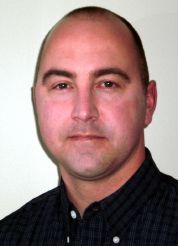
the source of the problem. After a complete inspection of the entire water treatment system, including the UV, no problems were detected. Further investigation revealed a toilet that was leaking slowly to the drain. During the hydro outage, the pressure tank in the basement had enough pressure to have water pass through the UV system and flow to the toilet. The untreated water passing through the UV system when it was not on was deemed the source of the problem. Most residential UV systems do not have a hydro outage protection device installed. This is a simple device that shuts the water off immediately when there is no power. It opens again when the hydro is restored. The device can plug into a standard 110-volt outlet or can be connected directly to some UV models, depending on the manufacturer. The installation of this type of device is a required component for regulated facilities that operate on rural water and supply water to the public. It is not required as part of a residential system.
Homeowners should inspect their home or cottage for leaking taps, shower fixture, toilets or garden hoses. These could potentially allow water to be used unnecessarily and have an impact on the water quality when the hydro is not present. A pressure gauge can identify water loss and be used to identify leaks in the plumbing system. The gauge at the pressure tank or pump should not move at all when there is no water running in the house or cottage. If it does, there is a leak somewhere in the plumbing system. A manual shut-off valve should be installed after the UV system for maintenance purposes; this can be closed during a hydro outage to prevent water flow. If the system is not readily accessible and no leaks are present, avoiding use of any water fixture during a power outage is recommended to help ensure no contamination of the plumbing occurs.
Jeff Wahl has 20 years of experience in the water treatment industry, is the CEO of Wahl Water and the creator of the program Wahl H20 – Educating Through Awareness. For more information, contact Jeff at info@wahlwater.com.

1494 Bell Mill Road, P.O. Box 456, Tillsonburg, ON, Canada, N4G 4J1 P.O. Box 2663, Buffalo, NY, USA, 14240-2663
Phone: 519.688.0500 Toll Free: 800.387.9355 Fax: 519.688.0563 Email: wells@wellmaster.ca Online: www.wellmaster.ca


Cable Tool
Rotary
Threaded
Weld On
Sizes 2” to 36”

